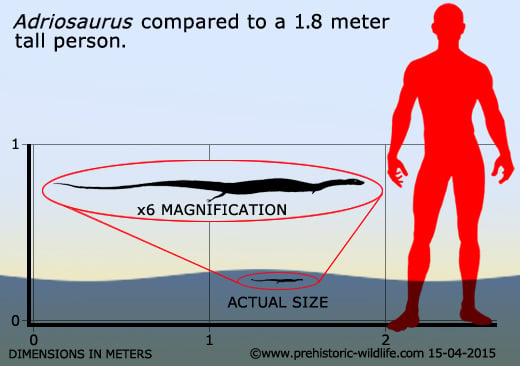In Depth
Adriosaurus was an aquatic lizard that is often described as being snake-like. This is because Adriosaurus had a thin elongated body similar to a snakes proportions, yet still retained small limbs. These limbs are widely thought to have been vestigial, which means that they were present yet no longer fulfilled a practical purpose and at the time of its discovery, Adriosaurus was taken as one of the first known transitional forms that showed lizards evolving into limbless snakes.
Further Reading
– On remains of a small lizard from Neocomian rocks of Comen, near Trieste, preserved in the Geological Museum of the University of Vienna. – Quarterly Journal of the Geological Society of London 37:52-56. – H. G. Seeley – 1881. – Vestigial forelimbs and axial elongation in a 95 million-year-old non-snake squamate. – Journal of Vertebrate Paleontology 27 (1): 1–7. – Alessandro Palci & Michael W. Caldwell – 2007. – Redescription of Acteosaurus tommasinii von Meyer, 1860, and a discussion of evolutionary trends within the clade Ophidiomorpha. – Journal of Vertebrate Paleontology 30 (1): 94–108. – Alessandro Palci & Michael W. Caldwell – 2010a. – A new species of marine ophidiomorph lizard, Adriosaurus skrbinensis, from the Upper Cretaceous of Slovenia. – Journal of Vertebrate Paleontology 30 (3): 747–755. – Michael W. Caldwell & Alessandro Palci – 2010b.










